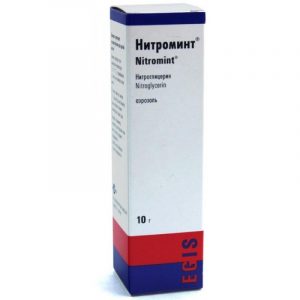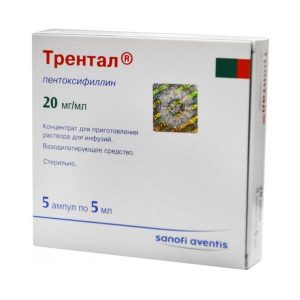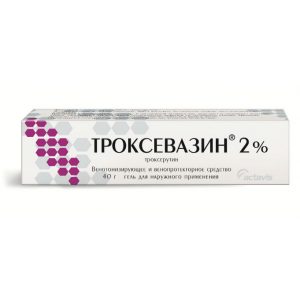Description
Latin name
NORVASC
Release form
Tablets.
Packing
30 pcs
Pharmacological action
NORVASK – a slow calcium channel blocker, a derivative of dihydropyridine. By binding to dihydropyridine receptors, it blocks slow calcium channels, inhibits the transmembrane transition of calcium into the cells of the smooth muscle of the heart and blood vessels (to a greater extent – in the smooth muscle cells of blood vessels than in cardiomyocytes).
Has an antihypertensive and antianginal effect.
The mechanism of the antihypertensive effect of amlodipine is due to a direct relaxing effect on the smooth muscles of blood vessels.
Amlodipine reduces myocardial ischemia in two ways: it expands peripheral arterioles and thus reduces OPSS (afterload), while heart rate remains practically unchanged, which leads to a decrease in energy consumption and myocardial oxygen demand and also expands coronary and peripheral arteries and arterioles as in normal , and in ischemic zones of the myocardium, which increases the oxygen supply to the myocardium in patients with vasospastic angina (Prinzmetal angina) and prevents the development of coronary spasm caused by smoking.
In patients with arterial hypertension, a single daily dose of Norvask provides a decrease in blood pressure over 24 hours both in the supine and standing position. Due to the slow onset of action, amlodipine does not cause a sharp decrease in blood pressure.
In patients with angina pectoris, a single daily dose of amlodipine increases the time it takes to exercise, delays the development of another attack of angina pectoris and ST segment depression (by 1 mm) during its execution, and reduces the frequency of angina attacks and the consumption of nitroglycerin tablets.
In patients with cardiovascular diseases (including coronary atherosclerosis with damage to one vessel and up to stenosis of 3 or more arteries and atherosclerosis of carotid arteries) who have had myocardial infarction, percutaneous transluminal angioplasty of coronary arteries (TLP) or suffering from angina pectoris, use intima-media of the carotid arteries, significantly reduces mortality from cardiovascular causes, myocardial infarction, stroke, TLP, coronary artery bypass grafting, reduces the number ospitalizatsy for unstable angina and progression of chronic heart failure, reduces the frequency of interventions aimed at restoring coronary blood flow.
Norvask ® does not increase the risk of death or the development of complications, leading to fatal outcomes in patients with chronic heart failure (NYHA class III-IV functional class) during treatment with digoxin, diuretics and ACE inhibitors.
In patients with chronic heart failure (NYHA class III-IV functional class) of non-ischemic etiology, Norvask is likely to cause pulmonary edema.
Norvask ® does not have any adverse effect on the metabolism and concentration of blood plasma lipids.
Indications
Arterial hypertension (both as monotherapy and in combination with other antihypertensive agents)
Stable angina and angiospastic angina (Prinzmetal angina) and as a monotherapy, or in combination with other antiangines.
Contraindications
– severe arterial hypotension
– hypersensitivity to the components of the drug
– hypersensitivity to other derivatives of dihydropyridine.
Use during pregnancy and lactation
The safety of Norvask during pregnancy has not been established, therefore, use during pregnancy is possible only when the intended benefits to the mother outweigh the potential risk to the fetus.
data, evidence of the elimination of amlodipine with breast milk is absent. However, it is known that other slow calcium channel blockers (dihydropyridine derivatives) are excreted in breast milk. In this regard, if it is necessary to use the drug Norvask during lactation, the issue of stopping breastfeeding should be decided.
Composition
1 tablet contains amlodipine (as besilate) 5 mg.
Excipients: microcrystalline cellulose – 124.056 mg, calcium hydrogen phosphate – 63 mg, sodium carboxymethyl starch – 4 mg, magnesium stearate – 2 mg.
Dosage and administration of
With arterial hypertension and angina pectoris, the average initial dose is 5 mg 1 time /, depending on the individual patient s reaction, it can be increased to a maximum dose of 10 mg.
Tablets are taken orally 1 time /, washed down with the required volume of water (up to 100 ml).
Changes in the dosage regimen of Norvask with the simultaneous use of thiazide diuretics, beta-blockers or ACE inhibitors are not required.
In elderly patients, the drug is recommended to be used in medium therapeutic doses, a dose change is not required.
Despite the fact that T1 / 2 amlodipine, like all calcium channel blockers, increases in patients with impaired liver function, any changes in the dose of the drug in this category of patients are usually not required.
In renal failure, Norvask ® is recommended in normal doses, but a possible slight increase in T1 / 2 must be considered.
Side effects
The frequency of adverse reactions below was determined according to the WHO classification: very often (> 1/10), often (from> 1/100 to 1/1000 to 1/10 000 to
From the cardiovascular system : often – palpitations, peripheral edema (ankles and feet), inflows to the face infrequently – excessive decrease in blood pressure is very rare – fainting, shortness of breath, vasculitis, orthostatic hypotension, development or aggravation of chronic heart failure, heart rhythm disturbances (including bradycardia, ventricular t chicardia and atrial fibrillation), myocardial infarction, chest pain
From the musculoskeletal system: infrequently – arthralgia, muscle cramps, myalgia, back pain, arthrosis rarely – myasthenia.
From the nervous system: often – headaches , dizziness, fatigue, drowsiness infrequently – asthenia, general malaise, hypesthesia, paresthesia, peripheral neuropathy, tremor, insomnia, mood lability, unusual dreams, increased irritability, depression, anxiety, ringing in the ears, taste perversion very rarely – migraine, , apathy, agitation, ataxia, amnesia.
From the digestive system: often – abdominal pain, nausea infrequently – vomiting, constipation or diarrhea, flatulence, dyspepsia, anorexia, dry mouth, thirst rarely – gum hyperplasia, increased appetite very rarely – gastritis, pancreatitis, hyperbilirubinemia (yellow) usually cholestatic), increased activity of hepatic transaminases, hepatitis.
From the hemopoietic system: very rarely – thrombocytopenic purpura, leukopenia, thrombocytopenia.
From the respiratory system: infrequently – shortness of breath, rhinitis, nosebleeds very rarely – cough.
From the side of the organ of vision: infrequently – diplopia, impaired accommodation, xerophthalmia, conjunctivitis, eye pain, visual impairment.
From the urinary system: infrequently – rapid urination, painful urination, nocturia is very rare – dysuria, polyuria.
From the reproductive system: infrequently – impaired erectile function, gynecomastia.
From the skin: rarely – dermatitis is very rare – alopecia, xeroderma, cold sweat, impaired skin pigmentation.
From the side of metabolism: infrequently – increase / decrease in body weight is very rare – hyperglycemia.
Allergic reactions: infrequently – skin itching, rash (including erythematous, maculopapular rash, urticaria) very rarely – angioedema, erythema multiforme.
Other: infrequently – chills very rarely – parosmia.
Drug Interaction
Microsomal oxidation inhibitors can be expected to increase plasma amlodipine concentrations, increasing the risk of side effects, and inducers of microsomal liver enzymes to decrease.
When co-administered with Norvaska with cimetidine, the pharmacokinetics of amlodipine do not change.
Unlike other calcium channel blockers, no significant interaction of the drug Norvask ® when co-administered with NSAIDs, especially with indomethacin, was found.
It is possible to increase the anti-anginal and antihypertensive effects of calcium channel blockers when used together with thiazide and loop diuretics, verapamil, ACE inhibitors, beta-blockers and nitrates, as well as enhancing their antihypertensive effects when used together with alpha1-blockers, neuroleptics.
Although no negative inotropic effect was commonly observed in the study of Norvask ®, nevertheless some calcium channel blockers may increase the severity of the negative inotropic action of antiarrhythmic drugs causing QT prolongation (eg, amiodarone and quinidine).
When used with lithium calcium channel blockers (no data is available for Norvask), neurotoxicity may increase (nausea, vomiting, diarrhea, ataxia, tremor, tinnitus).
Amlodipine does not affect in vitro the degree of binding to plasma proteins of digoxin, phenytoin, warfarin and indomethacin.
Single administration of aluminum / magnesium antacids has no significant effect on the pharmacokinetics of amlodipine.
A single 100 mg dose of sildenafil in patients with essential hypertension has no effect on the pharmacokinetics of amlodipine.
Repeated administration of amlodipine at a dose of 10 mg and atorvastatin at a dose of 80 mg is not accompanied by significant changes in the pharmacokinetics of atorvastatin.
When co-administered with amlodipine with digoxin, serum levels and renal clearance of digoxin do not change in healthy volunteers.
With single and repeated administration of 10 mg, amlodipine has no significant effect on the pharmacokinetics of ethanol.
Amlodipine does not affect warfarin-induced prothrombin time changes.
Amlodipine does not cause significant changes in the pharmacokinetics of cyclosporine.
The simultaneous single administration of 240 ml of grapefruit juice and 10 mg of amlodipine inward is not accompanied by a significant change in the pharmacokinetics of amlodipine.
overdose
Symptoms: marked decrease in blood pressure with possible development of reflex tachycardia and excessive peripheral vasodilation (there is a likelihood of pronounced and persistent arterial hypotension, including with the development of shock and lethal outcome).
Treatment: appointment of activated charcoal (especially in the first 2 hours after overdose), gastric lavage (in some cases), elevation of the limbs, active maintenance of cardiovascular function, monitoring of heart and lung performance, monitoring of BCC and diuresis. For restoration of a tone of vessels and BP, if there are no contraindications, use of vasoconstrictor drugs is possible. Use in / in the introduction of calcium gluconate. Because amlodipine is highly bound to serum proteins, hemodialysis is not effective.
Storage conditions
The drug should be stored at a temperature not exceeding 25 ° C.
Expiration
4 years.
Deystvuyuschee substances
amlodipine
dosage form
dosage form
tablets




